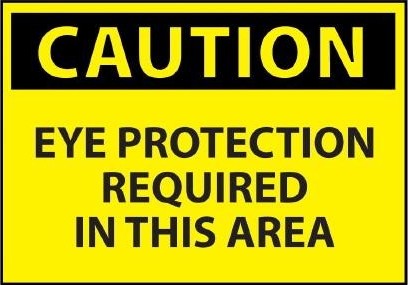 For many “large” employers, determining whether to “pay or play” may not be an easy process. The ACA’s employer shared responsibility provision goes into effect in 2014, making advance preparation even more important if you have part-time, seasonal or “variable hour” employees. Since you are only required to either potentially pay (a penalty for) or play (offer coverage to) those individuals who are considered your full-time employees, your ability to substantiate whether an employee is or is not “full-time” will be critical to successfully navigating the “pay or play” provisions of the ACA.
For many “large” employers, determining whether to “pay or play” may not be an easy process. The ACA’s employer shared responsibility provision goes into effect in 2014, making advance preparation even more important if you have part-time, seasonal or “variable hour” employees. Since you are only required to either potentially pay (a penalty for) or play (offer coverage to) those individuals who are considered your full-time employees, your ability to substantiate whether an employee is or is not “full-time” will be critical to successfully navigating the “pay or play” provisions of the ACA.
Tag: human resources
Protecting Your Eyes at Work
 Eye injuries in the workplace are very common. The National Institute for Occupational Safety and Health (NIOSH) reports about 2,000 U.S. workers sustain job-related eye injuries that require medical treatment each day. However, safety experts and eye doctors believe the right eye protection could have lessened the severity or even prevented 90% of these eye injuries.
Eye injuries in the workplace are very common. The National Institute for Occupational Safety and Health (NIOSH) reports about 2,000 U.S. workers sustain job-related eye injuries that require medical treatment each day. However, safety experts and eye doctors believe the right eye protection could have lessened the severity or even prevented 90% of these eye injuries.
via Protecting Your Eyes at Work | American Optometric Association.
Why You Need A Crisis Communication Plan?
 A crisis is any situation that threatens the integrity or reputation of your company, usually brought on by adverse or negative media attention. These situations can be any kind of legal dispute, theft, accident, fire, flood or manmade disaster that could be attributed to your company. It can also be a situation where in the eyes of the media or general public your company did not react to one of the above situations in the appropriate manner. This definition is not all encompassing but rather is designed to give you an idea for the types of situations where you may need to follow this plan. If handled correctly the damage can be minimized.One thing to remember that is crucial in a crisis is tell it all, tell it fast and tell the truth. If you do this you have done all you can to minimize the situation.When a situation arises that may be a crisis the first thing you should do is contact your CEO and the chief of your public relations department. The sooner you get those two organizations involved the sooner you can implement this plan.
A crisis is any situation that threatens the integrity or reputation of your company, usually brought on by adverse or negative media attention. These situations can be any kind of legal dispute, theft, accident, fire, flood or manmade disaster that could be attributed to your company. It can also be a situation where in the eyes of the media or general public your company did not react to one of the above situations in the appropriate manner. This definition is not all encompassing but rather is designed to give you an idea for the types of situations where you may need to follow this plan. If handled correctly the damage can be minimized.One thing to remember that is crucial in a crisis is tell it all, tell it fast and tell the truth. If you do this you have done all you can to minimize the situation.When a situation arises that may be a crisis the first thing you should do is contact your CEO and the chief of your public relations department. The sooner you get those two organizations involved the sooner you can implement this plan.
The Generation Gap – How To Motivate Generation X
- Roughly born between the 1960’s and 1980’s
- General Attitude: “Whatever…” Enigmatic
- Characteristics: Pragmatic, Individualistic, Arrogant, Risk Taking
- Likes: Sharing, Chilling, Being individualistic, Being with friends, Change
- Dislikes: Bossiness, Corporate culture.
Famous Xers include Lance Armstrong, Tiger Woods, Mark Shuttleworth, Jerry Yang, Jeff Bezos and Michael Dell.
The biggest generation gap exists between the Xers and the Baby Boomers. Unlike the Baby Boomers, they arrived almost unnoticed.
The Xers are defined more by what they are not, than by what they are. They arrived on the scene just as the economic boom was flattening.
For a generation who invented the term “Whatever…” it is no wonder that some people often described them as the cynical generation.
They grew up in a time when broken families were common. By the 1970’s, 40 percent of all couples living in major cities were divorced. So many of these kids spend every second weekend with a different set of parents.
A lot of them find comfort in close friends and peers, who they chose for their closeness, loyalty and dependable relationships
They also saw their parents being retrenched by the big corporations. So in general, they are sceptical about company loyalty. Like I have mentioned, the biggest generation gap exists between this generation and the previous ones
Xers feel that the promises made by the visionary Boomers about a brave new working world have fallen apart. Economies and organizations have shrunk, leaving them struggling to find work.
They feel caught in the middle of transition. They know that most companies need to make changes, but it is going way to slow for the naturally impatient Xers.
This generation like change. No, they don’t just like it; they thrive on it.
Tips for Motivating the Xers
- You need to earn their respect, yet they will take a while to demonstrate that respect for you. Act with integrity and you will close the generation gap.
- Give surprise rewards for unusual achievements.
- Fun is serious business! A little humor, something silly, practical jokes, even a little bit of irrelevance will help to create a stimulating, and productive workplace.
- Try a reverse mentoring programme in which younger employees are assigned to older executives, to help them get up to speed with technology and to close the generation gap.
- Don’t look over their shoulders all the time…it irritates them.
via The Generation Gap. How To Motivate Different Generations.
Don’t Ignore the Signs of Substance Abuse
 Some of the most common signs of substance abuse are things that aren’t there -– namely, the employee and the employee’s work ethic.
Some of the most common signs of substance abuse are things that aren’t there -– namely, the employee and the employee’s work ethic.
Unexplained absences and a decline in productivity might indicate an employee has a problem with substance abuse, noted Gordon Hughes, director of the employee assistance program at the U.S. Centers for Disease Control and Prevention (CDC). “The employee is probably missing Mondays or Fridays,” Hughes said. “There’s also a change in productivity. They were a good producer, they worked well, then there’s a sudden change. It may or may not be alcohol, but something is going on, and that’s a warning sign.”
via Don’t Ignore the Signs of Substance Abuse — Occupational Health & Safety.
Strategies for an Aging Workforce
 The Bureau of Labor Statistics estimates that 25% of the workforce will be over 55 in 2020. That’s one in four workers — up from one in every five workers just two years ago. Why? In addition to Boomers, the elimination of mandatory retirement and the enactment of age discrimination laws accounts for some of this trend. Better life expectancy and health is partly responsible. And for most, early retirement is largely a thing of the past. Many workers now choose to or must remain in the workforce longer than they had originally planned.
The Bureau of Labor Statistics estimates that 25% of the workforce will be over 55 in 2020. That’s one in four workers — up from one in every five workers just two years ago. Why? In addition to Boomers, the elimination of mandatory retirement and the enactment of age discrimination laws accounts for some of this trend. Better life expectancy and health is partly responsible. And for most, early retirement is largely a thing of the past. Many workers now choose to or must remain in the workforce longer than they had originally planned.
The good news is that a well-designed workplace with positive policies and programs to optimize the health of aging workers benefits everyone. When work stations and job tasks are matched to the capacity of each worker, younger or older, everyone benefits. When workplace flexibility is maximized, when work is organized with personal health and well-being principles in mind, and when workplace policies consistently are viewed through their health effects on workers, employers and workers both win. This is also a way for employers to exercise excellent foresight to support ongoing organizational health for their companies and indeed for the U.S. economy, as well as the individual worker’s well-being. By preventing stresses or injuries that, over time, can have cumulative negative effects on a worker’s ability to work safely and productively, an employer can help assure that the U.S. continues to have a capable, experienced workforce.
Many effective workplace solutions are simple, don’t have to cost very much, and can have large benefits if implemented properly with worker input and support throughout all levels of management. Below are strategies for preparing your workplace for an older and healthier, safer workforce. Consider putting these in place today.
- Prioritize workplace flexibility. Workers prefer jobs that offer more flexibility over those that offer more vacation days. To the extent possible, give workers a say in their schedule, work conditions, work organization, work location and work tasks.
- Match tasks to abilities. Use self-paced work, self-directed rest breaks and less repetitive tasks
- Avoid prolonged, sedentary work – it’s bad for workers at every age. Consider sit/stand workstations and walking workstations for workers who traditionally sit all day. Provide onsite physical activity opportunities or connections to low-cost community options.
- Manage noise hazards (including excess background noise), slip/trip hazards, and physical hazards, conditions that can challenge an aging workforce more.
- Provide ergo-friendly work environments — workstations, tools, floor surfaces, adjustable seating, better illumination where needed, and screens and surfaces with less glare.
- Utilize teams and teamwork strategies for aging-associated problem solving. Workers closest to the problem are often best equipped to find the fix.
- Provide health promotion and lifestyle interventions including physical activity, healthy meal options, tobacco cessation assistance, risk factor reduction and screenings, coaching, and onsite medical care. Accommodate medical self-care in the workplace and time away for health visits.
- Invest in training and building worker skills and competencies at all age levels. Help older employees adapt to new technologies, often a concern for employers and older workers.
- Proactively manage reasonable accommodations and the return-to-work process after illness or injury absences.
- Require aging workforce management skills training for supervisors. Include a focus on the most effective ways to manage a multi-generational workplace.
via CDC – NIOSH Science Blog – Safer and Healthier at Any Age: Strategies for an Aging Workforce.
Save Your Back – Practice Safe Lifting
- Try not to lift more weight than you’re used to carrying. How much you can handle safely depends in part on your level of conditioning. Technique also makes a difference.
- To help avoid back injury, remember to lift with your legs. Here’s how:
- Bend your knees.
- Keep your back straight, even when you’re putting down the load.
- Hold the load close to your body and use a slow, steady lifting motion.
- Don’t twist while carrying something. Instead, turn your feet and your body in the direction you want to go.
- If you need to move something that’s too heavy for you to lift, ask someone to help you. Or, if you’re authorized to use a forklift or other device, use it to move the object.
Injured and Addicted
 Worksites can present many types of hazards. Although some people may believe an injury occurring from those hazards is the worst-case situation, a worker recovering from that injury could be in just as much danger – if not more. From 1999 to 2008, the number of drug poisoning deaths involving opioid analgesics, or painkillers, more than tripled – to about 148,000 from 4,000, according to the Centers for Disease Control and Prevention. Also, for every unintentional opioid analgesics overdose death, there are nine people admitted for substance abuse treatment, 35 emergency department visits and 161 reports of drug abuse or dependence, CDC said. Although it is unclear how many involve employees who were injured on the job and are in the workers’ compensation system, experts contend that the national trend of painkiller abuse extends to recovering workers.
Worksites can present many types of hazards. Although some people may believe an injury occurring from those hazards is the worst-case situation, a worker recovering from that injury could be in just as much danger – if not more. From 1999 to 2008, the number of drug poisoning deaths involving opioid analgesics, or painkillers, more than tripled – to about 148,000 from 4,000, according to the Centers for Disease Control and Prevention. Also, for every unintentional opioid analgesics overdose death, there are nine people admitted for substance abuse treatment, 35 emergency department visits and 161 reports of drug abuse or dependence, CDC said. Although it is unclear how many involve employees who were injured on the job and are in the workers’ compensation system, experts contend that the national trend of painkiller abuse extends to recovering workers.
via Injured and addicted.
The Importance of Job Descriptions
![]() While there is no federal or Michigan statute that requires them, a good job description is an important tool in the effective and legal management of any organization. A well-written job description provides many essential benefits to human resource administration. On the other hand, a poorly written or out-dated job description can be a barrier to effective personnel management.
While there is no federal or Michigan statute that requires them, a good job description is an important tool in the effective and legal management of any organization. A well-written job description provides many essential benefits to human resource administration. On the other hand, a poorly written or out-dated job description can be a barrier to effective personnel management.
What Do Job Descriptions Do?
- Set clear job expectations.
- Give managers guidelines to hire, promote and supervise employees.
- Help support hiring, disciplinary, promotion, compensation and termination decisions.
- Help an employer comply with numerous legal requirements.
via The Importance of Job Descriptions | The National Law Review.
Drugs and The Workplace, Not Good Friends
 Being under the influence of anything while at work can affect reaction time and reflexes, which can be disastrous. People who work under the influence cause accidents are often the ones who are injured. In fact, industries with the highest rates of drug use are the same as those that are the highest risk for injury in the first place. This includes construction, mining, manufacturing and wholesale.
Being under the influence of anything while at work can affect reaction time and reflexes, which can be disastrous. People who work under the influence cause accidents are often the ones who are injured. In fact, industries with the highest rates of drug use are the same as those that are the highest risk for injury in the first place. This includes construction, mining, manufacturing and wholesale.
According to OSHA, there are five separate elements that ensure a drug free workplace. These five elements are: 1) A policy that does not tolerate it. 2) Supervisor training. 3) Employee education. 4) Employee assistance. 5) Drug testing. OSHA concludes with the fact that there must be consideration for employee rights to privacy and that many workers with substance abuse problems can be returned safely to the workplace provided they have access to appropriate treatment. With the right addiction treatment program anyone can fully recover, with that drugs and the workplace can be taken care of and have no more problems.
via Drugs and the Workplace | Addiction Treatment Programs | Arizona Rehab.


